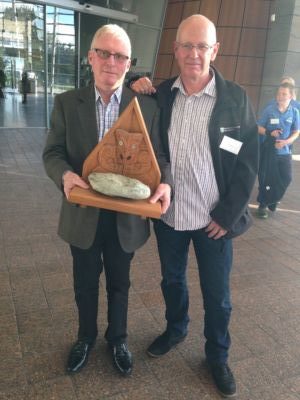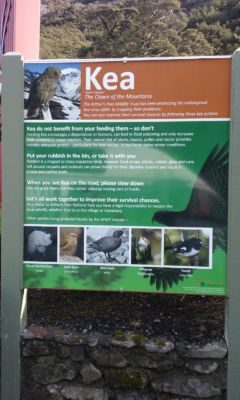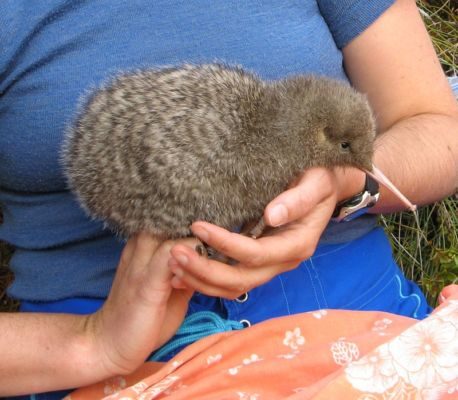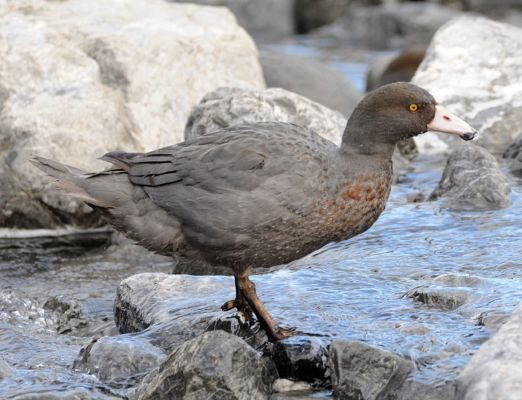Arthur’s Pass Wildlife Trust (APWT) doesn’t have a huge population to call on for its conservation work. There are only about 30 people living permanently in Arthur’s Pass village. But that hasn’t stopped them taking action to sort out the stoats that threatened their kea and great spotted kiwi – and now they’re celebrating a win at the Canterbury Aoraki Conservation Board awards for their work to improve biodiversity.

Along with a trophy and certificate, there’s a $2000 grant from the Isaac Wildlife Trust and chairman, Peter Neale already has some ideas on how that grant might be spent.

“We’d like to get some kea-proof traps,” Peter says. “There’s a new design based on DOC 150/200 traps but with a stainless steel plate at the end instead of mesh.”
The Arthur’s Pass Wildlife Trust often works alongside the Kea Conservation Trust (KCT) who are heavily involved in Arthur’s Pass. Some of the grant money may go towards a new sign planned by both groups to be erected at the DOC day shelter/campground, urging the town’s many tourists not to feed kea. The sign will include also information on a phone app to help people identify local banded kea.
It’s fitting that the kiwi and kea conservation groups should work closely together.
“Kea often nest close to a kiwi nest,” says Peter. “No-one knows why.”
A mutual warning system, perhaps?
“Kea also benefit from our trapping,” Peter says.
The first traplines were set up around Arthur’s Pass village around 2003 as a private initiative by Graeme Kates after he became concerned about the decline in native bird numbers in the village. In the early days Graeme caught a lot of stoats – the arch enemy of juvenile kiwi.
A scientific study of the great spotted kiwi in 2008 confirmed the benefits of extensive trapping where kiwi are nesting.

“Eggs left in the burrow to hatch were surviving,” says Peter.
This was in contrast to most kiwi recovery work around New Zealand,where eggs were taken to be hatched artificially and the chicks raised in captivity until they were a year old and able to defend themselves against stoats.
The Arthur’s Pass Wildlife Trust formed in 2010, after the 2008 kiwi study, in order to build on Graeme Kates beneficial trapping work and nowadays, Graeme is an approved kiwi handler for the Trust.
Peter has a 5km trapline from Arthur’s Pass village along the Mingha River and says stoat catches have decreased noticeably over recent years.
“I’ve only caught one stoat in about three months,” he says.
The Trust has about 700-800 traps in total, with most traplines checked by volunteers. Robin Judkins (of Coast to Coast fame) has – through the Arthur’s Pass Alpine Bird Sanctuary Trust that he formed – given his traplines to the Arthur’s Pass Wildlife Trust to manage and pays contractors to check them. It has more than doubled the number of lines for the group.
“Bach holders are also getting more involved too,” says Peter. “They check their traps every 5-6 weeks.”

Peter would like to get bach-holders more involved in the future.
“I’d like every bach-holder to have a stoat trap that they monitor and look after themselves,” he says, “mainly for educational reasons. It’s the lines that catch the most.”
Peter is also keen to encourage the next generation of conservationists.
“There are only two children who live permanently in the village,” he says. “They’re about 1 and 3 years old. Their Dad is a paid contractor and Mum volunteers checking the traplines, taking the kids with her. There’s also a family with a bach whose 6-year old is very enthusiastic. He wants to be a ‘junior member’ of the Trust and goes out with his parents.”
Although the Arthur’s Pass Wildlife Trust doesn’t have ‘junior members’ as such, they’re encouraging his keenness with the help of the Department of Conservation’s ‘Kiwi Ranger’ programme.
Cust School in North Canterbury is also a big supporter of the Arthur’s Pass Wildlife Trust. Through fundraising they have sponsored a trapline of 20 traps. A trustee has gone down to Cust to talk to the children and the Trust is hoping to organise a school visit to walk one of the easier traplines as soon as school schedules and weather forecasts permit.

The work is making a visible difference to all kinds of Arthur’s Pass birdlife. For the last two years a male whio has been living on the Bealey River in the village itself. Peter thinks he is a juvenile. He didn’t pair up last year, but this year the villagers are keeping their fingers crossed for him.
“One local couple has lived in the village for 53 years,” says Peter. “They reckon it’s the first time in about 30 years that they’ve seen a whio in the village – and there are plenty of other whio on the Edwards River a slight distance away.”
For a small team in a tiny mountain village, the Arthur’s Pass Wildlife Trust is doing great work. Their recent Biodiversity Award is hard-earned and well-deserved.

